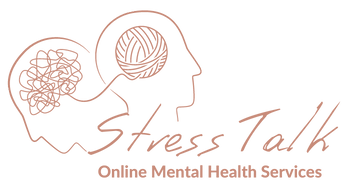Within therapy sessions, a crucial aspect involves elucidating various terms: emotions, thoughts, behaviours, coping mechanisms, patterns, and notably, stress. Comprehending these terms lays the groundwork for an enriching therapeutic experience. As a specialised psychologist in stress management, I firmly assert that understanding stress stands as one of the pivotal aspects for self-awareness.
When I ask my clients to tell me what they think stress is, the initial response often elicits silence. Stress is a concept many believe they comprehend, yet its true nature remains elusive. Eventually, the common misconception arises: “Stress is an emotion.” This marks the beginning of dispelling a few myths around stress.
Myth #1: Stress is an Emotion
When asked, “How do you feel?” it’s common to respond with “I feel stressed.” However, stress is not an emotion but a physiological response involving a cascade of mechanisms within our nervous, immune, and endocrine systems. It serves as a biological reaction enabling us to comprehend, adapt to, and manage changes in our environment. While stress is often associated with feelings, its underlying biological mechanisms aren’t directly perceptible. We typically recognize stress through physical signs (such as sweating, increased heart rate, or rapid breathing) and emotional indicators (anxiety, fear, anger, excitement, or happiness). Stress, therefore, triggers a range of emotional responses but is not an emotion itself.
For instance, imagine a hectic workday with a daunting to-do list and limited time. Although you may not consciously sense the activation of your stress response, you might experience feelings of anxiety, irritability, or even anger. Physical manifestations like “butterflies” in your stomach, sweaty palms, or a tension headache might also accompany these stress-inducing situations.
Myth #2: Stress Vanishes Completely
The completion of a challenging day at work might make you feel relieved, as the anxiety dissipates and physical signs subside. However, the deactivation of the stress response doesn’t completely disappear. Instead, the stress response shifts into a dynamic balance, maintaining an adequate level to sustain life. Even after the challenge is overcome, stress activation doesn’t reach absolute zero. This is a survival mechanism keeping us always in a state of readiness to respond to environmental threats, demonstrating that stress never entirely dissipates.
Myth #3: Stress Is Solely Negative
Contrary to common belief, stress isn’t inherently negative. Every individual has a stress activation threshold. Below this threshold, stress operates at an optimal functional level, often termed “productive stress.” However, crossing this threshold leads to the negative effects of stress, known scientifically as distress. Therefore, stress doesn’t exist in a binary state of good or bad but instead varies on a spectrum, capable of eliciting both positive and negative reactions.
Further Resources and Assistance
For those seeking additional materials on stress management and related topics, watch out for Stress Talk’s upcoming Resources page!
If you’re considering therapy to delve deeper into stress management, feel free to book an appointment here.
Stay updated and gain more insights by following Stress Talk on Instagram.

